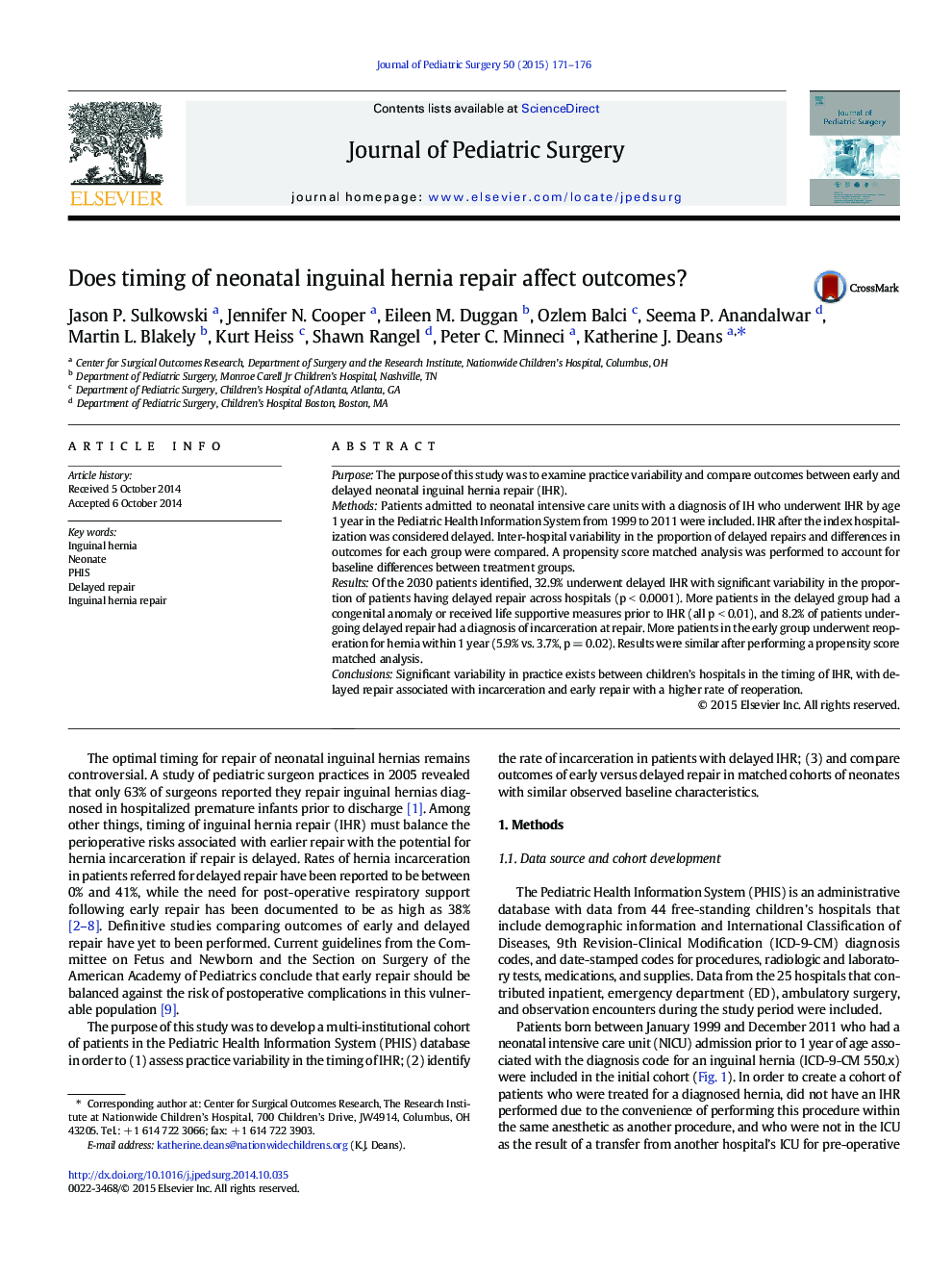| Article ID | Journal | Published Year | Pages | File Type |
|---|---|---|---|---|
| 4155225 | Journal of Pediatric Surgery | 2015 | 6 Pages |
PurposeThe purpose of this study was to examine practice variability and compare outcomes between early and delayed neonatal inguinal hernia repair (IHR).MethodsPatients admitted to neonatal intensive care units with a diagnosis of IH who underwent IHR by age 1 year in the Pediatric Health Information System from 1999 to 2011 were included. IHR after the index hospitalization was considered delayed. Inter-hospital variability in the proportion of delayed repairs and differences in outcomes for each group were compared. A propensity score matched analysis was performed to account for baseline differences between treatment groups.ResultsOf the 2030 patients identified, 32.9% underwent delayed IHR with significant variability in the proportion of patients having delayed repair across hospitals (p < 0.0001). More patients in the delayed group had a congenital anomaly or received life supportive measures prior to IHR (all p < 0.01), and 8.2% of patients undergoing delayed repair had a diagnosis of incarceration at repair. More patients in the early group underwent reoperation for hernia within 1 year (5.9% vs. 3.7%, p = 0.02). Results were similar after performing a propensity score matched analysis.ConclusionsSignificant variability in practice exists between children’s hospitals in the timing of IHR, with delayed repair associated with incarceration and early repair with a higher rate of reoperation.
